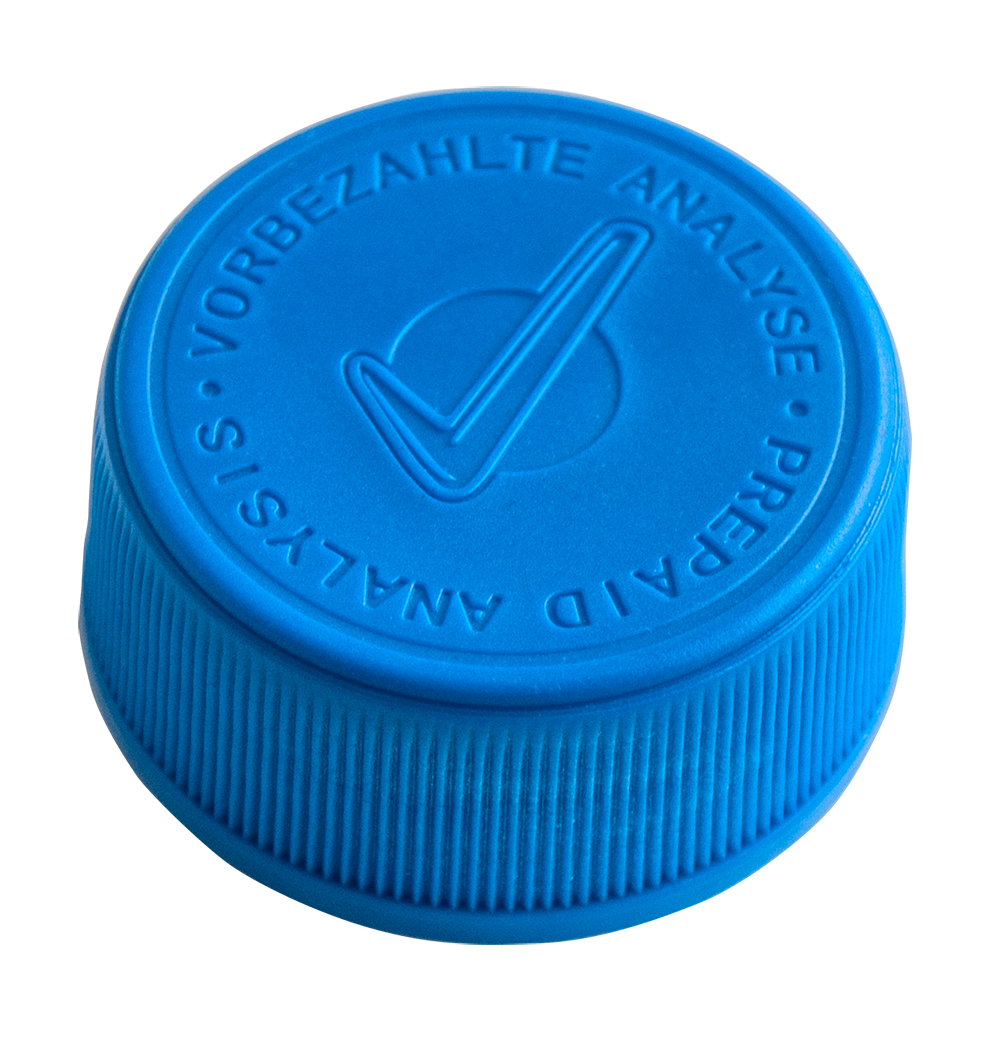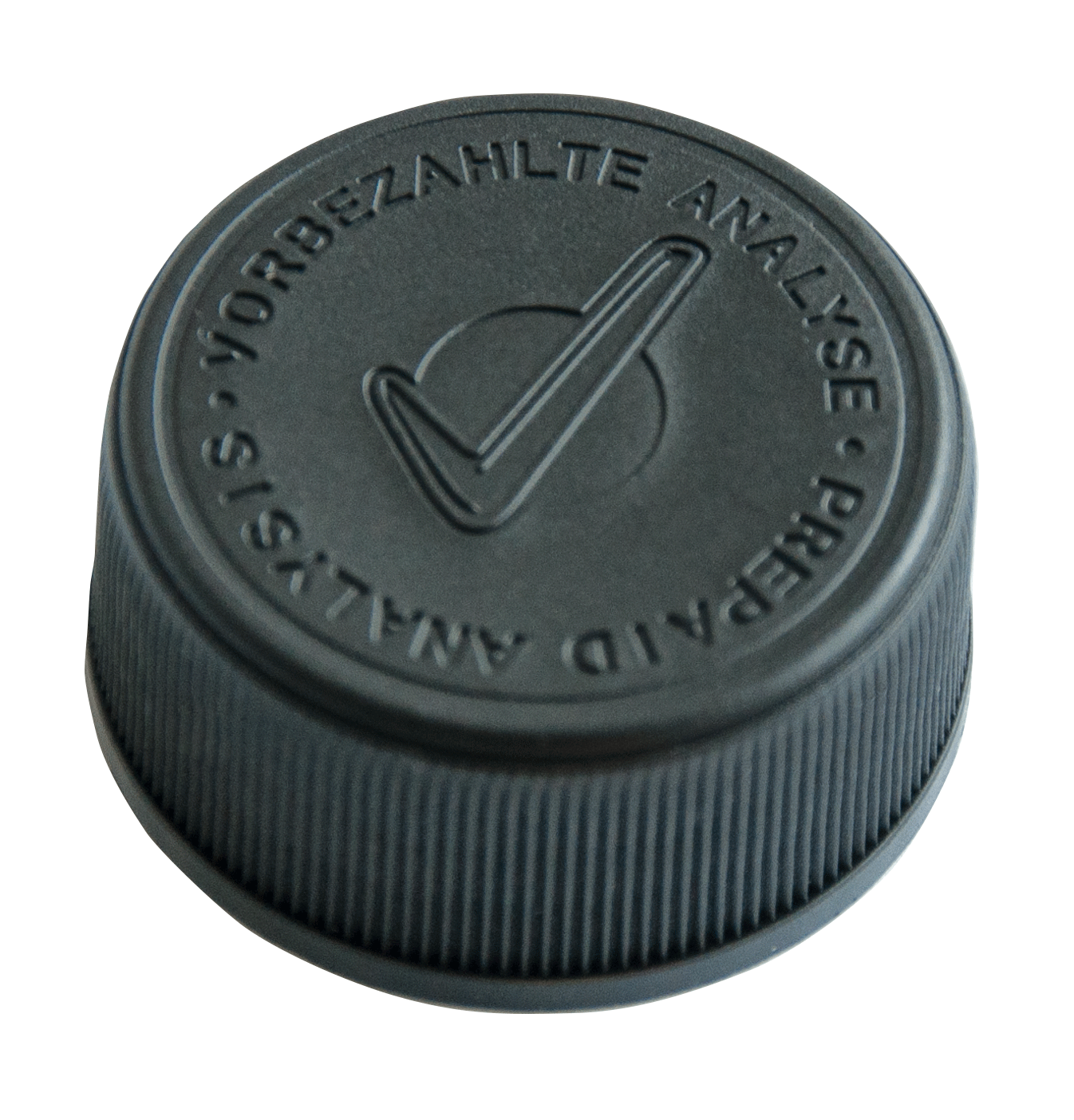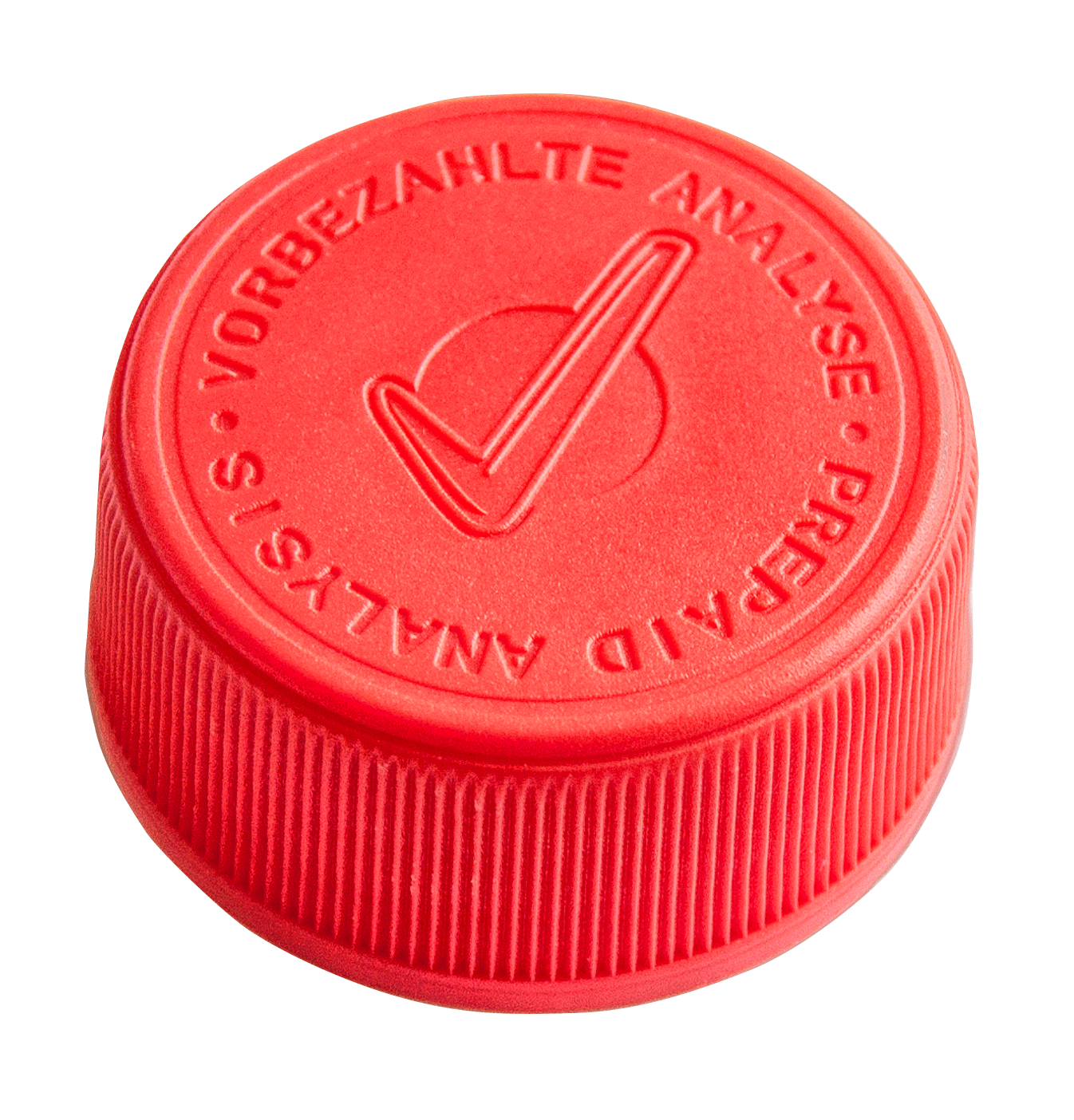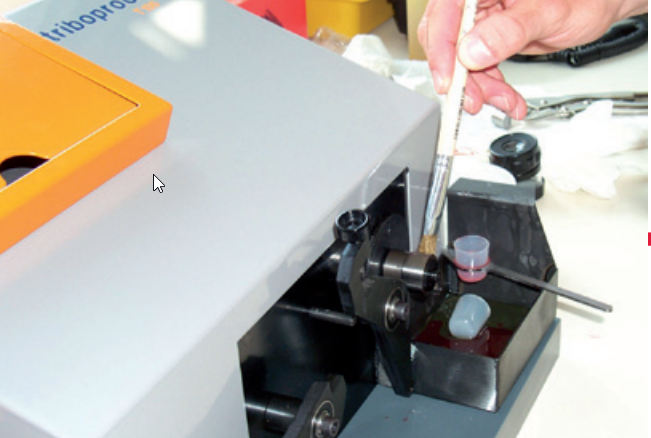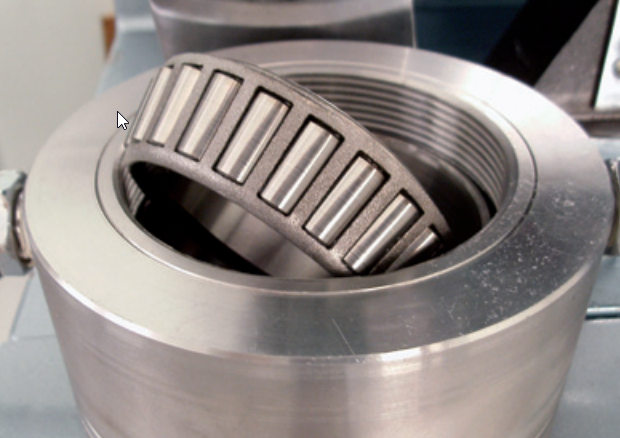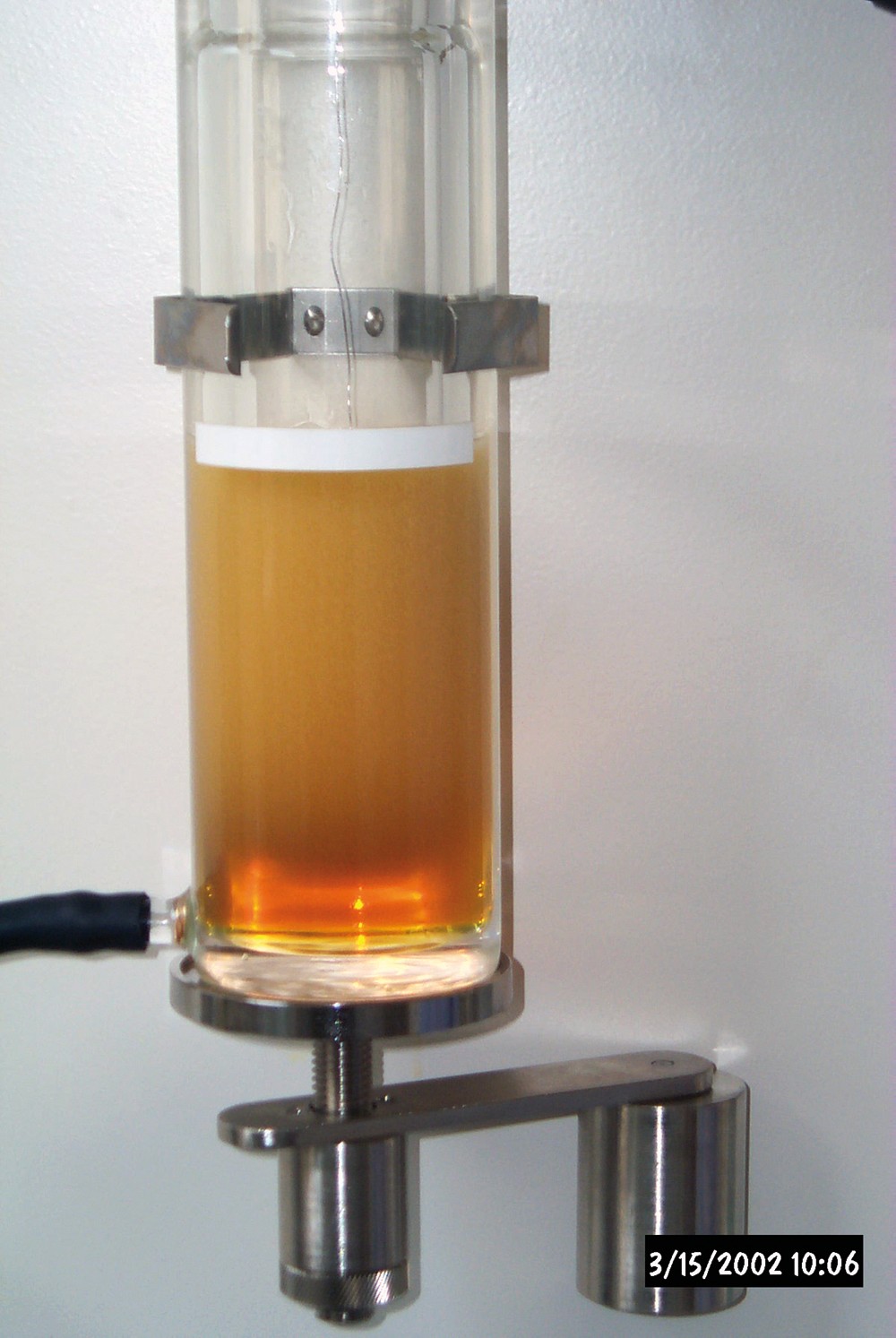Monitoring hydraulic fluids
Whether in stationary systems such as injection moulding machines, presses and elevators, or in mobile systems such as construction and agricultural machines, loading plants or transport vehicles – hydraulic fluids are being used in the most diverse systems, and in almost all industries and companies. More than 125,000 t per annum are being sold in Germany alone. More than 10% of total mineral oil sales are accounted for by hydraulic oils. The fairly low-priced oil is still regarded by many as a simple supplies. But for a long time now, hydraulic oils have evolved into special fluids without which modern hydraulic systems will often no longer function. However, the higher the levels of performance and specialisation, the more carefully these fluids must be maintained and monitored.
Hydraulic fluids handle a wide range of tasks. They transfer forces, drive machines, assume control functions, lubricate moving parts, protect against wear and corrosion, cool, dampen vibrations, and remove possible contaminants. But the performance of modern hydraulic systems is increasing, and so are the demands made on the fluids.
More compact systems
As a rule, the new systems are designed for smaller amounts of oil. However, a reduced volume of oil leads to shorter retention times in the oil container. Meaning that less time is available for cooling. The operating temperature of the fluid increases. In order to counteract the accelerated ageing process caused by the higher temperatures, hydraulic oils must be designed to be more oxidation proof.
Increasing pump pressures
The heart of a hydraulic system is its pump, which produces an almost continuous volume flow. With high pressure, it transports the oil to its work sites, the hydraulic motors and hydraulic cylinders. In the past, depending on design, 400 bar were reached on average. Nowadays, fluids must withstand pump pressures of 600 bar and more. Innovative hydraulic fluids are therefore designed with improved lubricity, thanks to which they can handle the higher mechanical stresses.
Decreased gap tolerances, perfected valve technology
The increase in operating pressures is made possible not only by optimised pump technology, but also through decreased gap tolerances, better surface finishes and a more fine-tuned valve technology, letting components function even more efficiently and precisely. However, filterability and purity of the fluids must be regarded much more critically than in the past.
Higher Energy Efficiency
Hydraulic systems should also operate on as little power as possible. The fuel for the diesel engines of the mobile hydraulic power units, or the power for the many stationary hydraulics are huge cost factors. Fluids that flow more easily at the same temperature, because they are either less thick or contain friction-reducing additives, allow for more cost-effective utilisation.
Permanent availability
Hydraulic systems are expected to be permanently available, and in a state of maximum production safety. Modern systems fulfil these requirements, provided they use hydraulic oils that have been designed for long-term use. But even using these requires filtration and maintenance of the oil fill, as well as continuous monitoring of the oil by analysis.
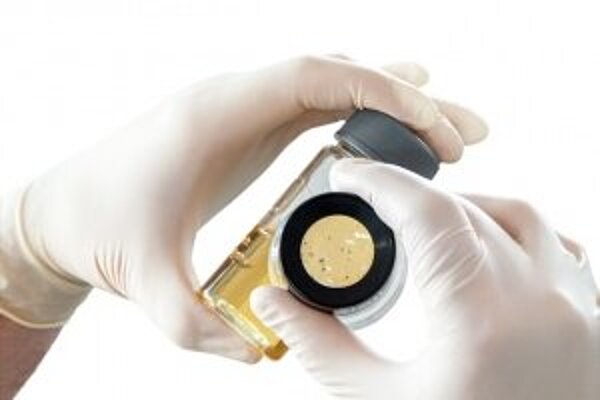
Table of contents
Performance class for hydraulic oils
Abbreviated designation | Abbreviated designation | Brief description of the composition | Remark | |
H | HH | unalloyed mineral oils without additives | mostly group I | rarely used anymore |
HL | HL | as for H | Mineral oil | very rarely as hydraulic oil |
HLP | HM | + wear protection | mostly mineral oil, also groups II to V | current standard, |
HVLP | HV | as for HLP | Groups III to V | energy-efficient fluids, |
HLPD | - | as for HL | Groups II and III | Use under wet and dusty conditions in mobile devices |
HVLPD | - | as for HVLP | Groups III to V | energy-efficient oils for large temperature range and in case of sludge formation |
- | HG | similar to HLPD | Groups II and III | when better antifriction properties are required |
Hydraulic fluids and DIN 51524 or ISO 11158
There are numerous hydraulic oils, of different performance capacity, and for the most diverse applications. The classic and most used hydraulic oils of types HL (HL), HLP (HM), HLPD (HG), HVLP (HV) and HVLPD are mostly produced based on mineral oils. Rapidly biodegradable hydraulic oils according to DIN ISO 15380 are mostly synthetic oils based on saturated esters. Hydraulic systems with an elevated risk of fire, e.g. in foundries, hard coal mining industry, and aeronautics, require special fluids that are not easily ignited, and that do not continue to burn independently (more on this in the ÖlChecker Spring 2011). The most frequently sold hydraulic oils are specified in performance classes pursuant to DIN 51524 or ISO 11158. Important minimum requirements of these oils are defined in DIN 51524 (parts 1 - 3) and ISO 11158. Besides purely physical data such as viscosity, density, flashpoint, pour point, ash or neutralisation number, typical tests relating to the area of operation are required.
- Demulsification capacity: shows whether and how fast water separates from oil.
- Air separation characteristics: makes it possible to draw conclusions in regard to cavitation tendency.
- Foam behaviour: states whether the oil tends to form foam on its surface.
- Seal compatibility: evaluates behaviour against elastomers.
- Oxidation stability: provides information about long-term use.
- Wear protection: is correlated using mechanical tests.
- Purity classes: define a baseline cleanliness of the fresh oil.
- Filterability: shows whether the oil composition may become a cause of filtration problems.
However, the DIN specifications only represent the lowest common denominator for the fluid characteristics. One important aspect is not considered by the DIN at all: the miscibility of different hydraulic oils.
There is no distinction between zinc-free or zinc-containing oils. HLP hydraulic oils can fulfil all requirements of DIN 51524-3, independent of whether additive combinations contain zinc to help achieve the performance level. The oils are miscible, but rarely compatible with each other in any ratio. This becomes especially apparent in a degradation of the air output characteristics, which provide information on the cavitation tendency of a fluid. Filterability and often also seal compatibility degrade when zinc-free and zinc-containing HLP oils are mixed.
OELCHECK Analysis kits for specialists and all-rounders
Modern hydraulic oils save energy and can remain in operation longer. On the downside, they are considerably more expensive and usually react more sensitively. Regular monitoring of these oils will help to avoid unpleasant surprises. OELCHECK offers the standard analysis sets 2 - 5 for the analysis of hydraulic fluids. In addition, special sets are available for biodegradable or highly flammable fluids. All calculated values and visual findings will be commented on by experienced engineers, and recommendations will be made for further action in consideration of the system and the time in operation.
Analysis kit 2: for mineral oil based hydraulic oils - up to app. 1,000 litres
Our "starter kit" contains a range of tests that are usually sufficient for the routine monitoring of small to medium systems. The following parameters are monitored:
- Wear metals: iron, chromium, tin, aluminium, nickel, copper, lead, manganese and molybdenum.
- PQ index, which includes all magnetic wear particles, independent of their size.
- Additive: calcium, magnesium, zinc, phosphorus, barium, boron, sulfur.
- Contaminants: silicon (dust), potassium, sodium, lithium (grease), water.
- Oil condition: Viscosity at 40°C and 100°C, viscosity index (reference to non shear-stable additives), oxidation by FT-IR, (also shows additive changes), visual impression (picture shows colouring or particles).
- Particle count according to ISO 4406 provides information on the degree of contamination.
Analysis kit 4: for synthetic hydraulic fluids - up to app. 1,000 litres
Analysis kit 4 includes all parameters of kit 2 and also provides information on:
- Water (using the Karl Fischer method): Each ppm of water counts, especially in the case of synthetic fluids in which water can lead to increased acid formation. Too much water can also cause corrosion, cavitation or oil oxidation. Depending on oil and system type, the water content of a hydraulic fluid should not exceed certain values (between 150 and 800 ppm). In particular, low water contents cannot be determined precisely enough with the FT-IR method (set 2).
- NZ or AN, the acid number: If this shows an increase in comparison to the clean oil values, it can be concluded that there is increased oil oxidation or the degrading of oil additives. It provides essential supplemental information for the extension of oil change intervals.
Analysis kit 5: for all types of hydraulic oils - more than app. 1,000 litres
Kit 5 includes an additional analysis:
- The RULER test: It is very important for large oil volumes or systems in which oil is not changed for years. This test determines ageing characteristics with particular precision, since the result given is the proportion of anti-oxidants still contained in the oil in relation to clean oil. Since oxidation inhibitors are continuously consumed while the oil is in operation, their residual amount and the operating time of the oil can indicate the remaining duration of use that is to be expected.
Additional special tests
The OELCHECK standard analysis sets cover all parameters relevant to statements regarding the further retention of a hydraulic fluid in the system. But sometimes a customer wants to delve deeper into the subject matter. In case of special questions and problems, our diagnostic engineers will be pleased to advise you. They will recommend individually selected, additional special tests. An entire palette of tests is available for your use.
Brugger test (DIN 51347)
While DIN 51524 defines the minimum requirements for wear protection of the hydraulic fluids, their load capacity values can be subject to extreme fluctuations in practice. If, for example hydraulic cylinders stick-slip or rattle, and hydraulic pumps, especially vane pumps, show a decreased output, this indicates a fluid of inadequate performance.
The Brugger test was developed to better evaluate the adhesion and wear protection of an oil on moving components. In the loaded pairing of a turning ring against a cylinder, over which oil is poured, an abrasion indentation is formed. The smaller this is, the better a hydraulic fluid is able to wet the paired surfaces, thereby suppressing squeaking noises and stick-slips.
KRL, tapered roller bearing test (DIN 51350-6)
Many hydraulic fluids, such as type HVLP, contain other VI improvers in addition to a good quality natural VI. These "thicken" the oil, improve the viscosity temperature behaviour, and lend the fluid an above average multigrade characteristic. VI improvers consist of very long chain molecules, which can be severely sheared under load. At the same temperature, the used oil then becomes much thinner than the fresh oil. The loss of viscosity is irreversible. The effects on the hydraulic system of an oil that has become too thin at operating temperature are accordingly severe.
One method to determine the change in viscosity as a result of the destruction of the VI improvers is the KRL test (tapered roller bearing). This variation of the four ball test (German: VKA) examines lubricants whose viscosity under high load should not change for a long time. The result provided by the KRL test is the viscosity before and after the test, as well as the relative decrease in viscosity at 100°C.
Filterability (DIN ISO 13357-2)
The filterability of an oil describes its behaviour while flowing through a filter. This test, which was originally developed for clean oils, provides the opportunity to check hydraulic oils that are still in development, to ensure that no prematurely blocked filters occur in practice. For used oils the test is used, for example, after an oil or filter change, filter service life has been shorten. Problems are often found as sticky deposits on the filter medium, or in the form of unsatisfactory oil purity. The cause of this can be another additivation, a different oil type, or the detachment of tribopolymers and the oil‘s own ageing products. In the case of reduced filter service life, testing the filterability of the used oil in comparison to that of the clean oil will quickly show whether the composition of base oil and additives is the cause of the problem, provided that all other technical values are equal.
The filterability of an oil is given as a simple numerical value. If, for example, an HLP 46 clean oil achieves a value of F=98 in the filterability test, its filterability is excellent. If F values are lower than 50, problems and decreased filter service life can be expected.
LAV, Air separation characteristics (DIN ISO 9120)
Just like water or other liquids, every oil contains air. Since it is „dissolved“ air, it cannot be seen in the form of bubbles. How much air a clean oil can absorb depends on its saturation behaviour. This is influenced mainly by the oil temperature, the oil type, the viscosity, the additivation, and the pressure in the system. The air absorption capacity also changes in the course of operation, by mixing oils that contain different additives, as well as through contaminants or oxidation products. Under the effects of temperature, the air dispersed throughout the oil may be released in the form of visible air bubbles. These are the cause for the „diesel effect“, or cavitation. A deterioration of the LAV in comparison with clean oil is often the reason for system malfunctions. The air output characteristic can be improved neither with additives nor by mechanical means.
Because the exact air content in oil is difficult to determine, there is no standard for this. The LAV value determined in the OELCHECK lab indicates by means of density how long it takes until the air dispersed in oil is separated up to a residual content of 0.2 volume percent.
Foam behaviour (ASTM D892)
Surface foam is formed when air bubbles with a diameter of more than 15 µm up to a few millimetres float up from the oil and do not immediately disintegrate. The walls of the gas-filled foam cells are formed by thin lamellae of liquid. Especially oils with a high content of additives tend to an increased foam formation. In contrast to the LAV test, the foam behaviour can be improved by foam inhibitors – mostly by those containing silicone. However, silicone oil may markedly deteriorate the air separation characteristic of oils. Therefore, caution should be exercised during a subsequent addition! The foam behaviour may deteriorate: When inhibitors are filtered out, oils age strongly, or oils with different surface tensions are mixed. An excessive foam formation may lead to an oil foam leak, and thus to environmental problems.
In the lab, air-perfused high temperature insulating bricks (HTI bricks) in the oil are used to determine how long it takes until the surface foam disintegrates after stopping the air flow.
WAV, demulsification capacity (DIN ISO 6614)
Other than dust, hydraulic fluids are often contaminated by water, which may enter the system in the form of condensate but also during the high-pressure cleaning process. Water accelerates the formation of corrosion. If it is heated in the points of contact due to friction, steam bubbles may form, which are the cause of cavitation in hydraulic pumps. A quick separation of the oil from the water is desirable. Hydraulic oils according to DIN 51524 should have a demulsifying effect.
However, the opposite effect can also be useful. For hydraulic oils of the non-standardised category HLP-D, the water is not to be separated, but to be neutralised by emulsification.
The WAV test, in which oil and water are mixed in a ratio of 1:1 and then stirred, indicates after an idle period if, and how quickly, water separates from the oil. Frequently, the formation of an emulsion can also be observed through an intermediate layer, and this emulsion is responsible in practice for muddy deposits.
TOST test (DIN EN ISO 4263)
In large industrial facilities, hydraulic fluids must remain in use over several years. The oxidation stability plays an important role for the oils used in such facilities. For the assessment of used oils, the oil oxidation, or ageing, is determined with FT infrared spectroscopy and the change of NZ or of AN. A prediction, regarding which oil is better suited for long-term use, can be obtained with the TOST test.
In the TOST test, pure oxygen flows through the warmed oil, to which water is added, for a period of about 3 months and in the presence of a copper coil. The increase of the acid reaction product formed during this process is regularly measured. The longer the process lasts, until the oil becomes "acid", the more suitable it is for long-term use.
Conclusion
Modern hydraulic fluids, which are partly or completely synthetic, in general offer a markedly higher performance than conventional hydraulic oils. They can remain in use longer, protect better against wear and cavitation, and help save energy. This also means, however, that their price is correspondingly higher. In order for an investment into these contemporary fluids to pay off and allow you to use their complete performance capability, you should monitor their use with our OELCHECK trend analyses.
OELCHECKER Summer 2013, page 5 - 7

